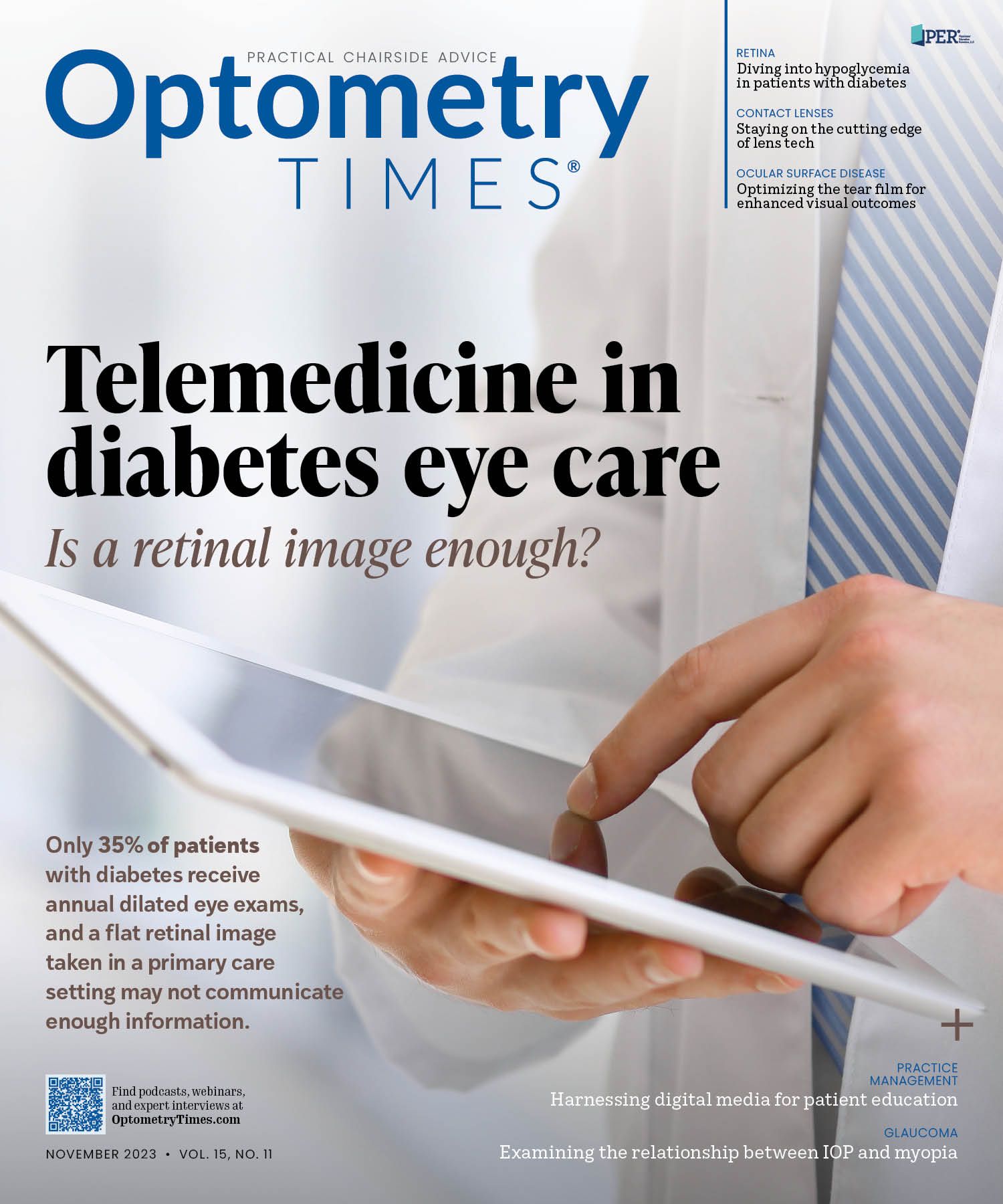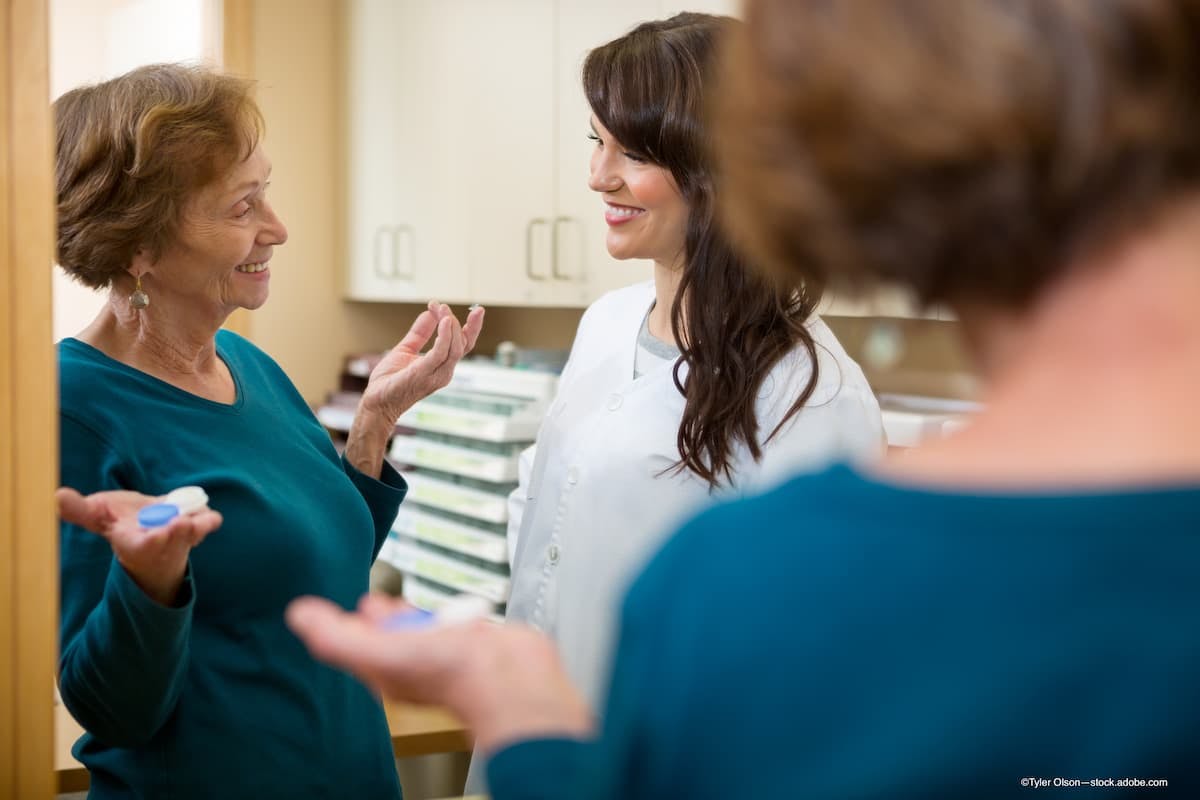Harnessing digital media for enhanced patient engagement and outcomes
(Image credit: Adobe Stock / Syda Productions)

In recent years, the landscape of patient education in the field of eye care has undergone a significant transformation, thanks to the rapid advancement of digital media and smartphone applications. The paradigm shift has led to enhanced engagement and the integration of technology into the doctor-patient relationship, which has translated into improved subjective patient outcomes through improved patient understanding of disease. We have witnessed these improvements in different patient populations.
Traditional methods of patient education, which often have relied on printed pamphlets and verbal communication, are now being complemented and enhanced by digital platforms. According to recent studies, an increasing number of patients have a strong preference for visual and interactive content.1-3 In response, eye care practices have embraced digital media, including technology such as CheckedUp, to meet the growing demand for accessible and engaging educational resources.
CheckedUp is a digital platform that has gained prominence in eye care for its innovative approach to patient education and engagement. Developed specifically for eye care providers, CheckedUp serves as a comprehensive digital solution that facilitates communication between providers and patients. It uses auditory, visual, and tactile elements to enhance patients’ understanding of their conditions. By providing personalized content (e.g., anatomic explanations in patient-friendly language), CheckedUp aids the patients’ comprehension of their eye diseases, such as glaucoma and diabetic retinopathy. This integrated platform can be implemented in both virtual and in-person consultations, effectively managing patients across a spectrum of eye diseases.
Digital media’s role in educating patients
Observational studies1-3 using survey data were conducted with different cohorts of patients—those with diabetic retinopathy, glaucoma, and dry eye—seen at a private eye clinic. The results of the surveys showed that patients who received digital education using CheckedUp demonstrated a better understanding of their disease and its management compared with the group who did not engage with the digital platform. Of patients who answered “no” when asked about their knowledge of disease, a common reason was often that they forgot the details of what was shared by the physician at the time of the follow-up visit.
Benefits of digital media in patient education

Enhanced accessibility
One of the primary advantages of using digital media and technology like CheckedUp is the ease of accessibility. Patients can access educational content at their convenience, allowing for continuous learning that has the potential to extend beyond the provider’s office visit.
Engagement and interactivity
CheckedUp, and similar digital platforms, enable eye care professionals to create interactive content, such as 3D animations, videos, and quizzes. This dynamic approach to education enhances patient engagement and understanding, as complex concepts can be visually explained or gamified, leading to improved retention and adherence to treatment plans.
Tailored education
CheckedUp’s platform provides personalized education based on the patient’s condition and treatment plan. This individualized approach ensures that patients receive information that is relevant to their specific needs, leading to more informed decision-making, active participation in care, and a greater sense of empowerment. Additionally, using digital technology provides the ability to translate information into many languages at the point of care.
Drawbacks and considerations
Although digital media and platforms like CheckedUp hold significant promise for patient education in eye care, challenges remain. These include addressing digital literacy gaps, ensuring robust data security, and maintaining the quality of information in a rapidly evolving digital landscape. Eye care providers must exercise caution and ensure that the educational resources provided through technology like CheckedUp are evidence based and up to date. Striking a balance between leveraging these tools to enhance patient education while preserving vital doctor-patient interaction will be pivotal for maximizing the benefits of technology in the field.

The integration of digital media marks a transformative era in patient education within eye care. As eye care specialties continue to evolve, practitioners must strike a balance between harnessing the power of technology and maintaining the human touch that defines the doctor-patient relationship. By embracing these advancements thoughtfully, the field can continue to empower patients with knowledge and contribute to improved eye health outcomes.
References
1. Gysels M, Higginson IJ. Interactive technologies and videotapes for patient education in cancer care: systematic review and meta-analysis of randomised trials. Support Care Cancer. 2007;15(1):7-20. doi:10.1007/s00520-006-0112-z
2. Shlobin NA, Patel S, Dahdaleh NS. Social media as a tool for patient education in neurosurgery: an overview. World Neurosurg. 2022;161:127-134. doi:10.1016/j.wneu.2022.02.054
3. Duong TA, Gleason LT, Kichler K, et al. Improving surgical patient education materials using informational design with visual elements. Am J Surg. 2022;224(6):1497-1500. doi:10.1016/j.amjsurg.2022.08.009

Newsletter
Want more insights like this? Subscribe to Optometry Times and get clinical pearls and practice tips delivered straight to your inbox.





.png&w=3840&q=75)





















